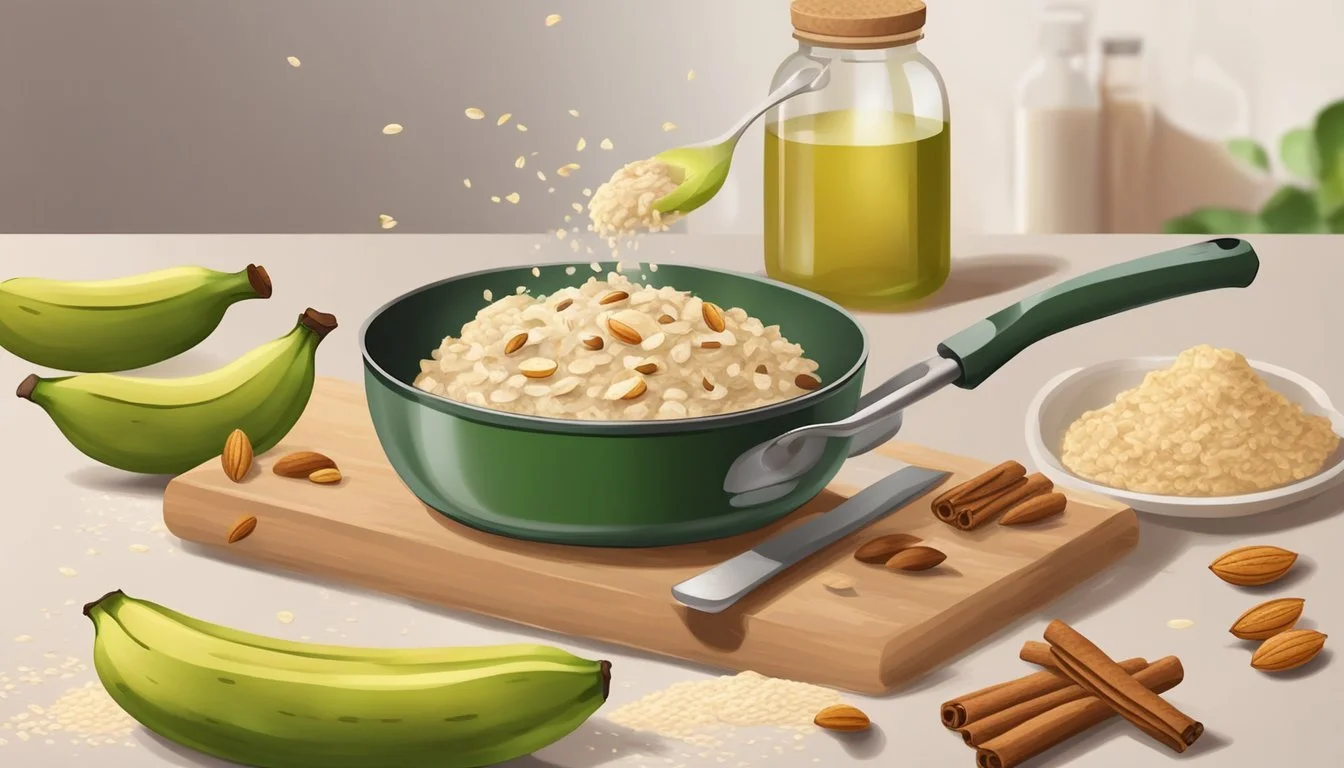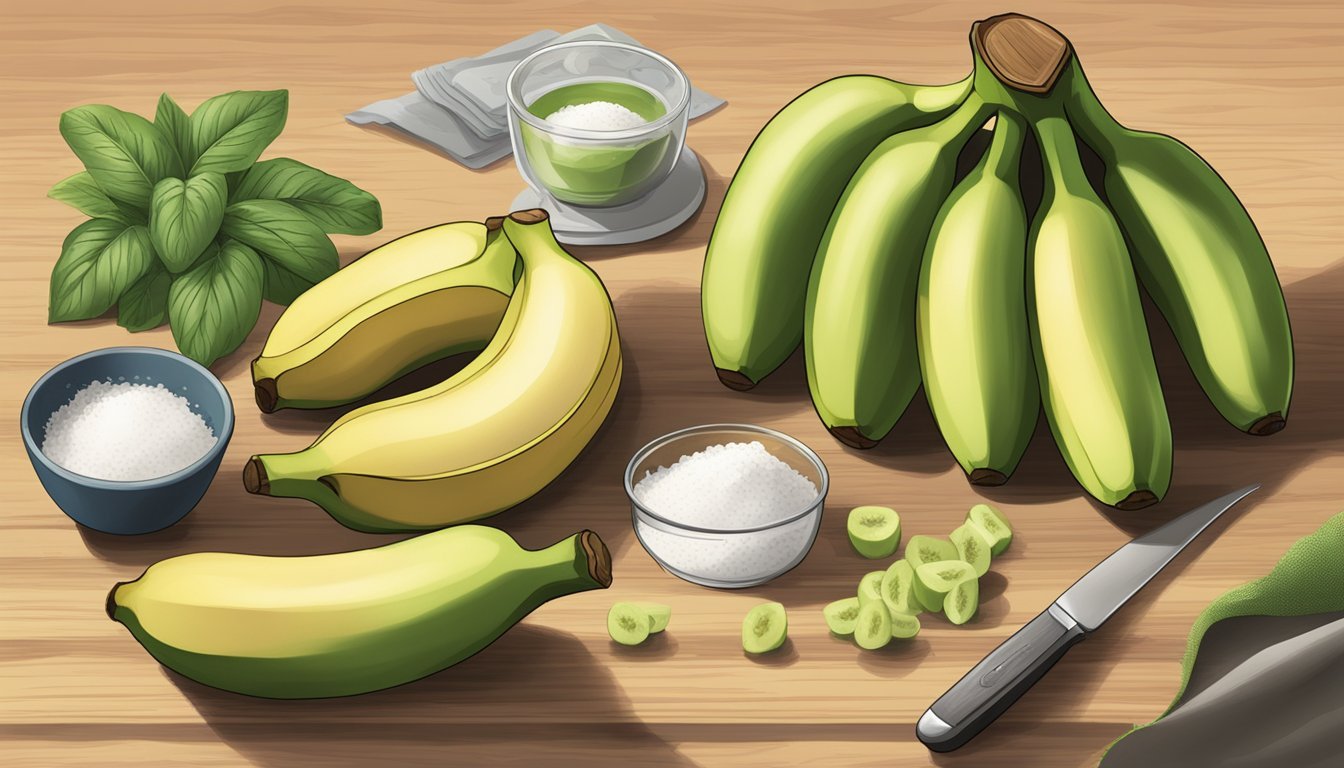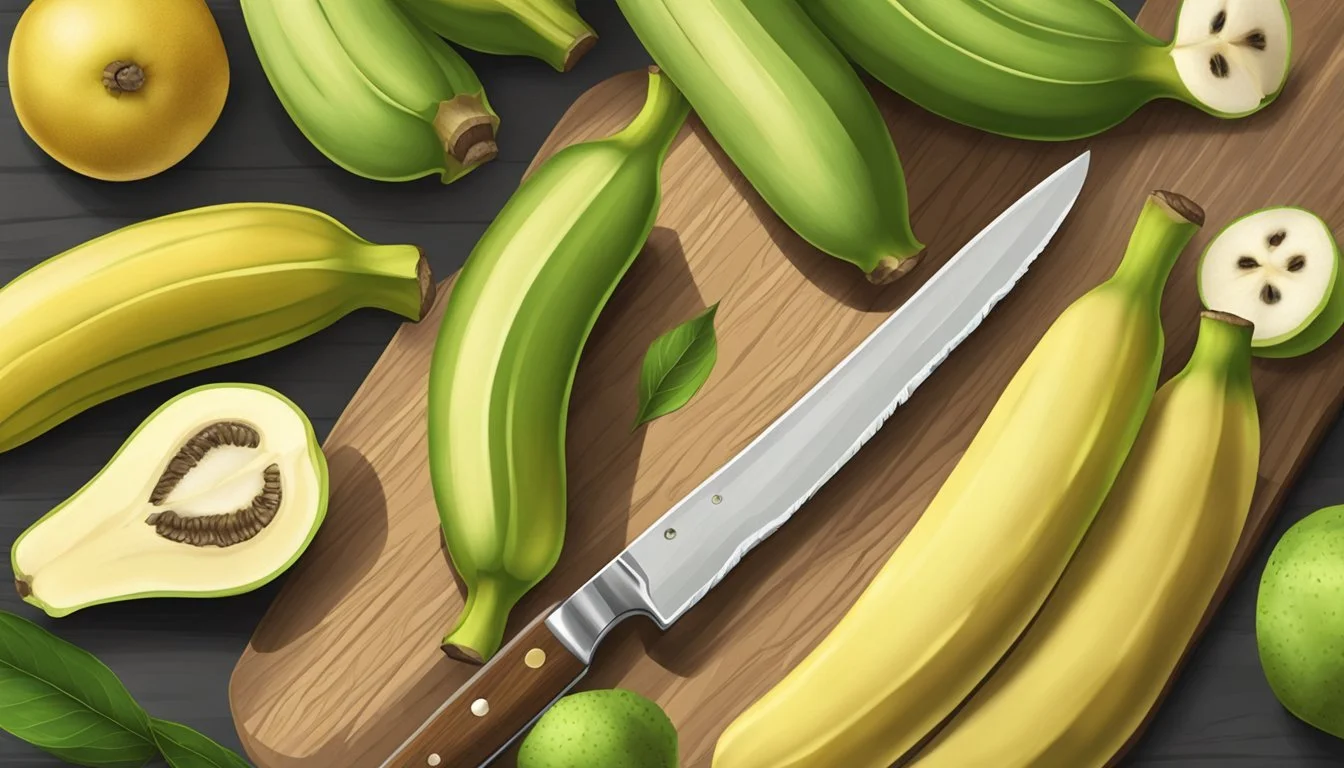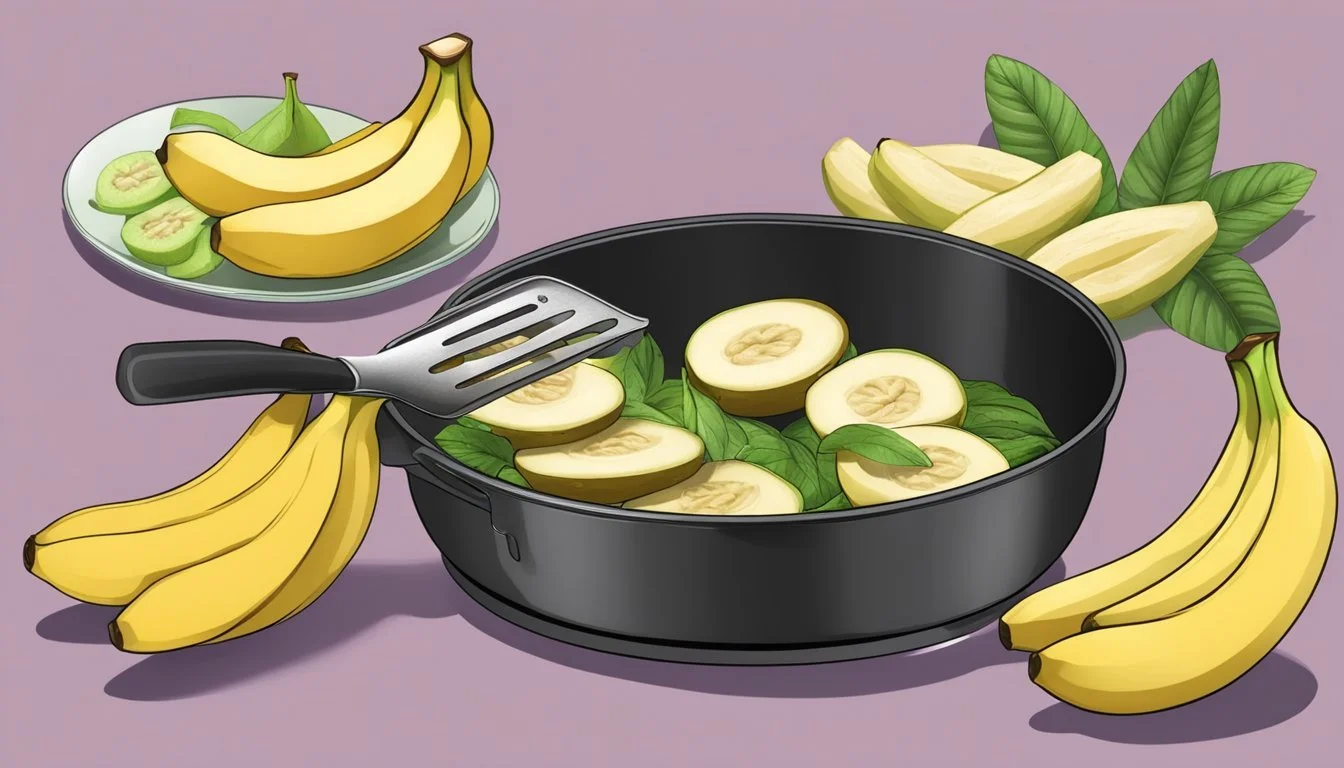How to Cook with Unripe Bananas for Lower Sugar Content
Healthier Recipe Alternatives
Unripe bananas offer a unique culinary advantage, especially when considering health and sugar intake. Unlike their ripe counterparts, which are known for their sweetness, unripe bananas are higher in resistant starch and lower in sugar, making them an excellent choice for those monitoring their blood sugar levels. Cooking with unripe bananas can thus contribute to a more balanced diet, particularly for individuals with diabetes or those aiming to reduce their sugar consumption.
The resistant starch in green bananas not only has a lower glycemic impact but also benefits gut health. As bananas ripen, their starch content converts to sugars, increasing their sweetness and calorie content. By opting to cook with unripe bananas, chefs can manage the sugar content in their dishes, enabling a broader audience, including diabetics, to enjoy banana-flavored recipes without the usual spike in blood sugar that ripe bananas can cause.
The versatility of unripe bananas extends to various recipes, from baked goods like banana bread to savory dishes. Adjusting recipes to use unripe bananas might involve minor modifications to achieve the desired texture and flavor. Through careful preparation and cooking, unripe bananas can be transformed into a range of delicious and health-conscious culinary creations.
Understanding Banana Ripeness and Sugar Content
Bananas undergo significant changes from unripe to ripe, impacting their sugar content and health implications.
Ripeness Scale and Sugar Levels
When bananas are unripe, particularly when they are green, their composition is largely resistant starch, which is not readily digestible by humans. As they ripen, the starch transforms into sugars, primarily glucose, fructose, and sucrose, which increases the banana's sweetness. A ripe banana contains a higher sugar content compared to its unripe counterpart. The ripeness of a banana is often indicated by its color:
Green (Unripe): High in starch and resistant starch, low in sugar.
Yellow with Green Tips (Semi-Ripe): Moderate starch, sugars beginning to form.
Yellow (Ripe): Lower in starch, higher in sugar.
Spotted Brown (Very Ripe): High in sugar, low in starch.
Benefits of Unripe Bananas on Health
Unripe bananas offer several health benefits due to their lower sugar content and higher resistant starch levels. The presence of resistant starch means that unripe bananas have a lower glycemic index, which can help in managing blood sugar levels, making them a suitable option for those with diabetes. Additionally, the indigestible nature of resistant starch promotes digestion and gut health by acting as a prebiotic. Unripe bananas still provide essential nutrients, such as potassium, vitamins, and minerals, offering a helpful balance in a nutritious diet.
Nutritional Profile of Unripe Bananas
Unripe bananas are a rich source of nutrients that can benefit digestive health and provide essential vitamins and minerals. They are particularly noted for their high starch content, which includes resistant starch, beneficial for the digestive system. Unlike their ripe counterparts, unripe bananas are lower in sugar, making them an excellent choice for those monitoring their sugar intake.
Resistant Starch and Digestive Health
Unripe bananas contain a significant amount of resistant starch, which functions similarly to soluble fiber. Resistant starch is not digested in the upper digestive tract and instead ferments in the large intestine. This fermentation process promotes the growth of beneficial gut bacteria and may aid in preventing intestinal issues.
Fiber Content: High in dietary fiber, unripe bananas aid digestion and help maintain regular bowel movements.
Digestive Benefits: The consumption of unripe bananas can lead to improved gut health and may alleviate problems such as constipation.
Vitamins and Minerals in Green Bananas
The nutritional value of green bananas extends beyond their starch and fiber content. They are a good source of several key vitamins and minerals:
Vitamin B6: Essential for brain health and the creation of neurotransmitters.
Vitamin C: An antioxidant that supports immune health and skin integrity.
Potassium: Vital for heart function and muscle contraction.
Manganese: Contributes to bone formation and nutrient metabolism.
In addition to these nutrients, unripe bananas supply a modest caloric intake while offering a satisfactory amount of energy, making them a balanced food choice for a nutrient-rich diet.
Preparing Unripe Bananas for Cooking
Properly preparing unripe bananas is crucial for maintaining a lower sugar content and achieving the desired texture in cooking. These methods will ensure that the bananas retain their firmness throughout the cooking process.
Peeling and Cutting Techniques
Peeling: Unripe bananas have a firmer peel than ripe bananas. Start by slicing off both ends of the banana with a knife. Make a shallow cut longitudinally along the peel, careful not to slice into the fruit itself. One can typically remove the peel in sections from this slit.
Cutting: Once peeled, cut the unripe banana into slices or chunks based on the recipe requirements. To retain firmness, it's best to cut in thick slices as thin slices may become too soft when cooked.
Storage and Ripening Control
Room Temperature: Store unripe bananas at room temperature to gradually advance the ripening process. Keep them away from other ripe fruit to avoid hastening ripeness due to ethylene gas emission.
Refrigerate: To slow down ripening, one might opt to refrigerate unripe bananas. Refrigeration maintains the lower sugar content longer, however, the peel may darken.
By carefully peeling and cutting unripe bananas and controlling their ripening through storage, one can effectively prepare bananas for cooking that maintain their firm texture and reduced sugar levels.
Culinary Uses of Unripe Bananas
Unripe bananas, known for their lower sugar content, offer diverse culinary applications. They contribute a subtle sweetness and firm texture that is ideal for an array of savory dishes and desserts.
Banana-Based Recipes and Ideas
Boiled Unripe Bananas: Boiling is a simple preparation method where one peels the bananas and boils them until tender. They can then be served whole as part of a traditional Jamaican breakfast or alongside dinner.
Banana Chutney: A tangy and savory condiment that utilizes the firmness of unripe bananas to hold up during the cooking process.
Banana Pancakes: By substituting ripe bananas with unripe ones, pancakes have reduced sweetness, which can be enhanced with savory toppings.
Unripe Banana Ice Cream: Offers a less sweet alternative to traditional banana ice cream and can be flavored with various spices or extracts.
Innovative Cooking Methods
Baking with Unripe Bananas: Unripe bananas can be sliced and baked in a preheated oven at 375°F (190°C) after being washed and slit. They require at least 45 minutes to an hour in the oven and can be lightly salted before baking.
Method Temperature Duration Notes Baking 375°F (190°C) 45-60 mins Ideal for dried banana slices or chips.
Frying Green Bananas: Sliced unripe bananas can be fried in oil until they are golden and crispy, making for a savory snack or side dish.
Method Oil Temp Cook Time Outcome Frying Medium-High Varies Golden, crispy slices or chips.
Managing Sugar Intake with Unripe Bananas
Unripe bananas offer an innovative solution for individuals aiming to reduce their sugar consumption. With their lower sugar content and higher fiber levels, they impact blood sugar less significantly than their ripe counterparts.
Low-Sugar Recipe Alternatives
Unripe bananas contain more resistant starch and less sugar, making them less sweet and consequently a healthier option for recipes that traditionally use ripe bananas. Recipes for banana bread, muffins, or pancakes can be adapted by substituting ripe bananas with unripe ones to lower the sugar content. It is important to adjust the amount of added sweeteners to taste, as the natural sugars are not as pronounced in unripe bananas.
Banana Bread: Replace ripe bananas with unripe bananas and reduce added sugar by one-fourth to maintain flavor without the sugar spike.
Smoothies: Add unripe bananas for a less sweet, thick, and creamy texture while keeping the carbohydrate count low.
Incorporating Unripe Bananas in Diabetic Diets
People with diabetes or those managing insulin sensitivity can benefit from including unripe bananas in their diet. The resistant starch in unripe bananas is digested more slowly, which helps maintain steadier blood sugar levels. Healthcare professionals often stress the importance of a low glycemic diet for managing type 2 diabetes. Unripe bananas have a lower glycemic index than ripe bananas, making them a suitable fruit choice for diabetics when considering portion sizes.
Fiber Content: The fiber in unripe bananas can aid weight loss efforts by promoting a feeling of fullness.
Blood Sugar Management: The glycemic impact of unripe bananas on blood sugar levels is lesser, which is crucial in diabetes management.
When incorporating unripe bananas into a diet, individuals should consult with healthcare professionals to tailor their dietary choices to their specific health needs and goals.
Tips and Tricks for Enhancing Flavor
When cooking with unripe bananas for lower sugar content, it's essential to know how to enrich their flavor and palatability. Given that unripe bananas are not as sweet and flavorful as their ripe counterparts, one can take advantage of various ingredients and techniques to enhance their taste and texture.
Combining with Other Ingredients
Yogurt: Incorporating yogurt into unripe banana dishes can add creaminess and a slight tang, complementing the starchy nature of the fruit.
Nuts: For a contrast in texture and a nutty flavor, one can mix chopped nuts such as walnuts or almonds into unripe banana recipes.
Butter: A small amount of butter can enrich the flavor profile of dishes with unripe bananas, lending a silky mouthfeel.
Vanilla Extract: To add depth to the flavor, vanilla extract can be a delightful addition to unripe banana dishes.
Here's a table highlighting ingredient pairings:
Ingredient Suggested Use Effect on Taste Effect on Texture Yogurt Salads, Smoothies, Baking Tangy Creamier Nuts Snack, Baked Goods Nutty Crunchier Butter Cooking, Baking Richer Smoother Vanilla Baking, Desserts Aromatic Unchanged
Texture and Taste Enhancements
Salt: A pinch of salt can heighten the flavor of unripe bananas, making them a versatile addition to both sweet and savory dishes.
Mash or Blend: One may mash or blend unripe bananas to create a smoother consistency for baking or snack preparations.
Garlic or Spices: For savory recipes, garlic or a mix of spices can provide a complexity that balances the unripe banana's blandness.
Cooking techniques that enhance taste and texture might include:
Baking: Gentle heat can help soften unripe bananas and intensify their natural flavors, especially with a sprinkle of salt.
Boiling: Boiling bananas with a touch of salt can make them tender and more palatable as a component in savory meals, like salads or side dishes.
FAQs About Cooking with Unripe Bananas
In this section, readers will find answers to frequently asked questions about using unripe bananas in cooking, particularly for reducing sugar content, and how to substitute them in recipes.
Common Questions and Concerns
Can unripe bananas be a healthier choice in cooking?
Yes, they can. Unripe bananas are lower in sugar compared to their ripe counterparts. They are high in resistant starch, which may have less of an impact on blood glucose levels, making them a suitable option for those monitoring their sugar intake, such as individuals with type 2 diabetes.
How does the nutritional content of unripe bananas differ from ripe bananas?
Unripe bananas contain more starch and less sugar than ripe bananas. As bananas ripen, the starch converts into sugars, increasing the sweetness. Unripe bananas also have higher levels of pectin and resistant starch, which are beneficial for digestive health.
Are there different baking considerations when using unripe bananas?
Unripe bananas have a firmer texture and contain less moisture. They are starchier and less sweet, which can affect the flavor and outcome of baked goods. Adjustments in sweeteners or liquids may be necessary when substituting unripe for ripe bananas in a recipe.
Substituting Unripe Bananas in Recipes
How can unripe bananas be used as a substitute in recipes?
Unripe bananas can be used in recipes where bananas act as a filler or for their binding properties. They can replace ripe bananas in recipes that call for a less sweet taste or are specifically designed for lower sugar content.
Recipe Type Adjustment with Unripe Bananas Smoothies Add a sweetener or riper fruit Banana Bread Increase sugar or sweeteners Pancakes Pair with a sweeter topping
What considerations should be taken when replacing ripe bananas with unripe ones?
When substituting unripe bananas, consider their lower sugar content and higher starch content. Depending on the recipe, slight modifications may be needed, such as adding sweeteners or adjusting cook times to accommodate the firmer texture of the unripe bananas.
Conclusion
Unripe bananas offer a unique culinary avenue for those aiming to reduce sugar intake while still enjoying the texture and flavor that bananas provide. They contain more resistant starch and less sugar than their ripe counterparts, making them a sensible choice for individuals with diabetes or those seeking a lower glycemic impact. Cooking with green bananas can be a simple adjustment to recipes that traditionally use overripe bananas.
Health Benefits of Unripe Bananas:
Higher in dietary fiber: Supports digestive health.
Lower sugar content: Beneficial for blood sugar management.
Resistant starch: Feeds beneficial gut bacteria.
Incorporating unripe bananas into one’s diet doesn’t have to be complicated. Whether blended into smoothies, baked into banana bread with slight modifications, or used as a savory component in dishes, the green fruit contributes to culinary diversity.
Tips for Cooking with Unripe Bananas:
Use them in banana bread for a less sweet, but still moist, final product.
Try them in smoothies, adding a sweetener if needed.
Experiment with green bananas in savory recipes for an interesting twist.
For the conscious cook, unripe bananas present a versatile and health-friendly ingredient. They help maintain nutritional balance and offer an inventive spin on traditional banana-infused dishes. When health concerns or sugar intake are of importance, green bananas are a smart and beneficial inclusion in any kitchen repertoire.







